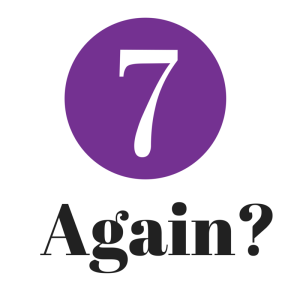In general, you can file a chapter 7 bankruptcy case once every eight years. For example, if you filed on January 1, 2008, then you would not be eligible to file another chapter 7 bankruptcy case until January 2, 2016. If you filed the case in between those two dates, the chapter 7 trustee or the United States trustee would likely bring a motion to dismiss the case for ineligibility. However, there is another chapter that you can file which would provide significant relief. You could file a chapter 13 bankruptcy case and proposed to repay your creditors as little as 10% over a three to five-year period. Additionally, you can keep your chapter 13 active until such time that you are eligible to file a chapter 7 bankruptcy once again. In that case, you would have to dismiss your chapter 13 bankruptcy and refile a chapter 7 case. You would not be able to convert the case once you were past the eight years and a day because the case number would remain the same thus the filing date would remain the same. This is one of those unique nuances of the bankruptcy code whereby you actually have to dismiss your chapter 13 despite the fact that more than eight years have passed since your prior chapter seven to be able to file another chapter seven. Clients often question why do I need to dismiss my case and then refile? Clients obviously want to avoid having to take the credit counseling, provide two months of paycheck stubs and provide their most recent federal tax return again. The reason as stated above is simply that the case number and the date of filing remain the same when you convert from a chapter 13 to a chapter 7.
You Can Also Try Chapter 13 Bankruptcy
You may find that chapter 13 will provide significant relief when chapter 7 is unavailable. After all, if creditors are bothering you with wage garnishments, bank citations and other collection activities, those all cease in a chapter 13 bankruptcy case. Your secured creditor such as your house and car and other secured debts get paid back at a priority above the unsecured creditors. Debts such as credit cards, medical bills, personal loans, utility bills, repo deficiencies and most other unsecured debts are paid back at less than what is owed over a three to five-year period. They also get paid back after the secured debts are paid typically. This means that the credit card company that you owe money to who may have garnished your wages will actually get very little back towards the very end of your case. To learn more about chapter 13 and the different hierarchy and ways that creditors are treated, you need to discuss it with an experienced chapter 13 bankruptcy attorney in your local area.
Another major benefit of filing a chapter 13 before you are eligible to file a chapter 7 is that you will have an opportunity at the time you refile the chapter 7 to add any creditors you may have incurred since your chapter 13 case was filed. This means that you have the protection of your discharge in that you have not exhausted it as of yet. Chapter 7 will be the ultimate elimination of unsecured debt at the time of filing. You can rest assured that while you’re in your chapter 13, if you were to incur any post-petition debt such as payday loans, credit cards, medical bills or other debt, those debts can be included when you eventually file for the chapter 7 fresh start bankruptcy. The quality of attorneys will vary and the fees will vary so please do your research before you actually decide to file. The attorney that you hire can make a huge difference in the way that your case is handled. You want to make sure that you have an excellent attorney who will take care of everything in your case so that it goes as smoothly as possible for you.



